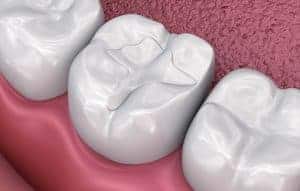Tooth Colored Fillings Explained
When it comes to dental fillings there are generally two types – composite or white, tooth-colored fillings, and silver (amalgam) fillings.
Safety
Before we proceed any further, it’s important to underscore that both types of filling materials are safe, and that there are clinical indications for both types of restorations.
Composite Filings vs. Silver Fillings
One of the reasons that we currently use white fillings more than silver fillings is because white fillings allow us to preserve more tooth structure. Amalgam fillings are not bonded-in and are held in by mechanical retention, and thus require us to usually take away more tooth than a bonded filling. However, bonded fillings (composites) can lead to more post-operative sensitivity vs. amalgam fillings, but this sensitivity is almost always temporary.
Cosmetics and Durability
Cosmetically, it’s obvious that white fillings are more attractive than silver fillings. But if someone has poor oral hygiene or finds it difficult to brush effectively, silver filings may last longer than white fillings as the edges of silver filings are more forgiving. When it comes to front tooth fillings, we exclusively use white material.

Why Use a Silver Filling?
If white fillings have so many advantages, why do we use silver fillings at all? The answer is that silver fillings are very effective in case where access to the tooth is limited, or if a patient cannot stay open for a prolonged period of time. Composite filings are very technique sensitive, and in a patient who struggles with dental appointments, amalgam can be an effective filling option.






